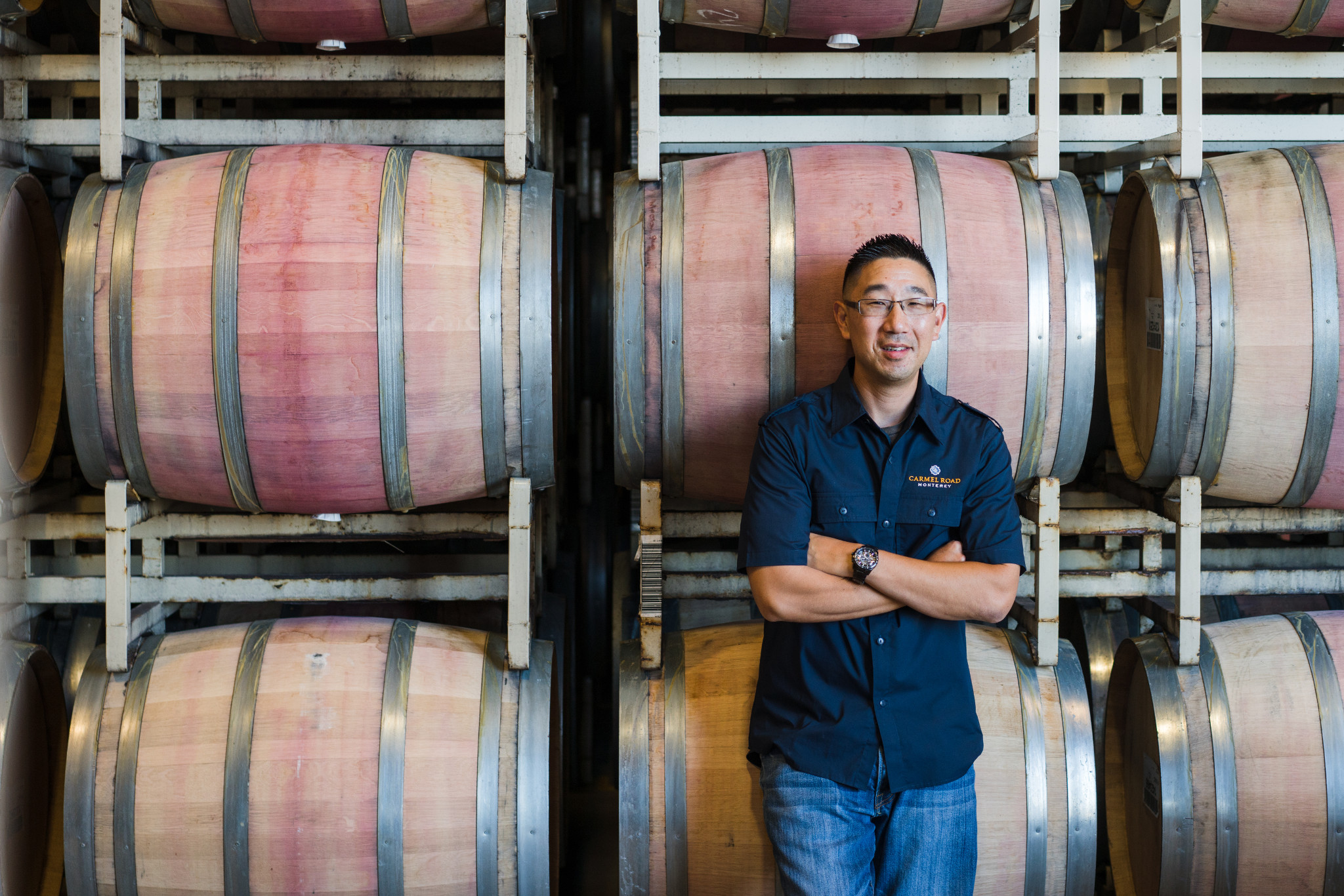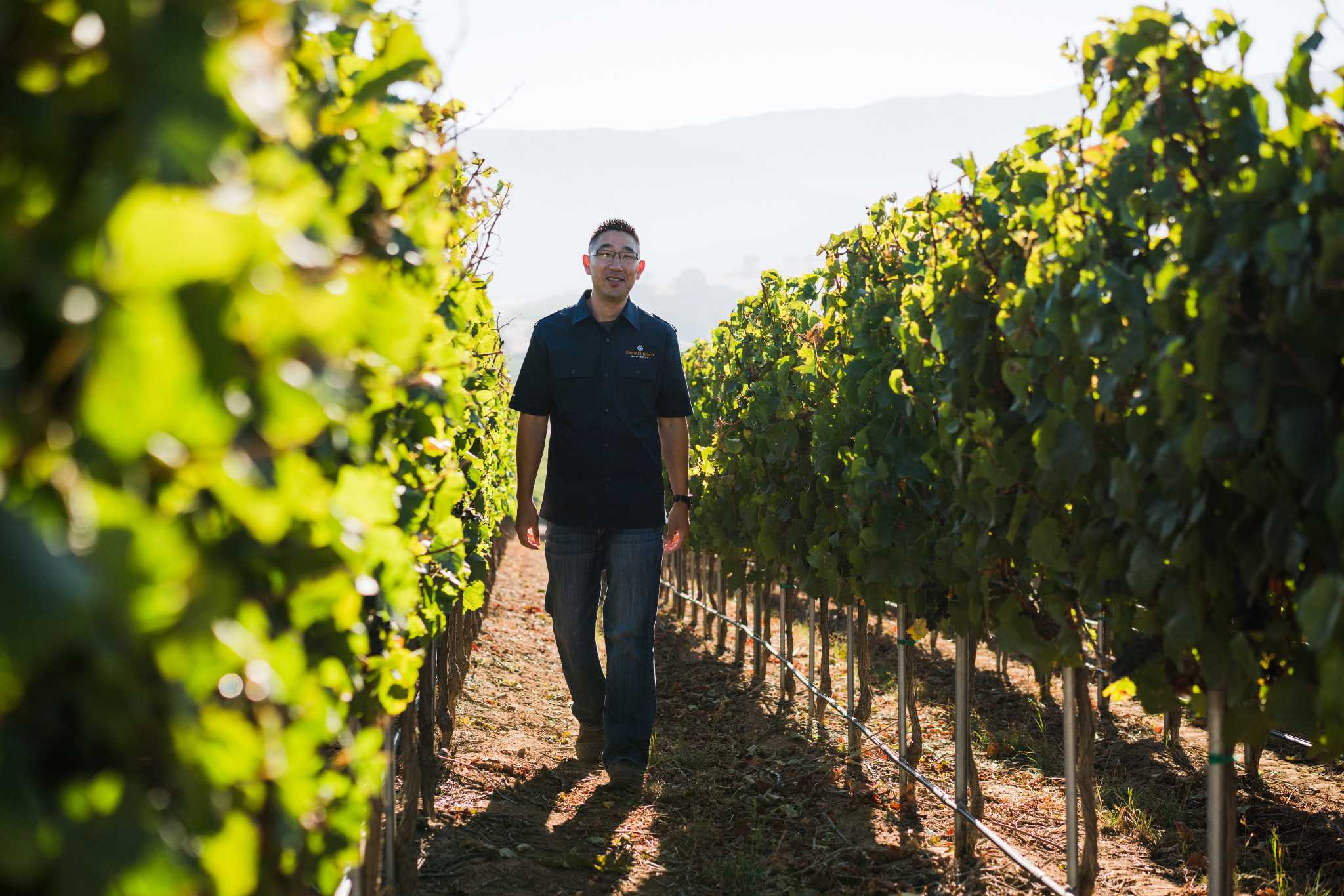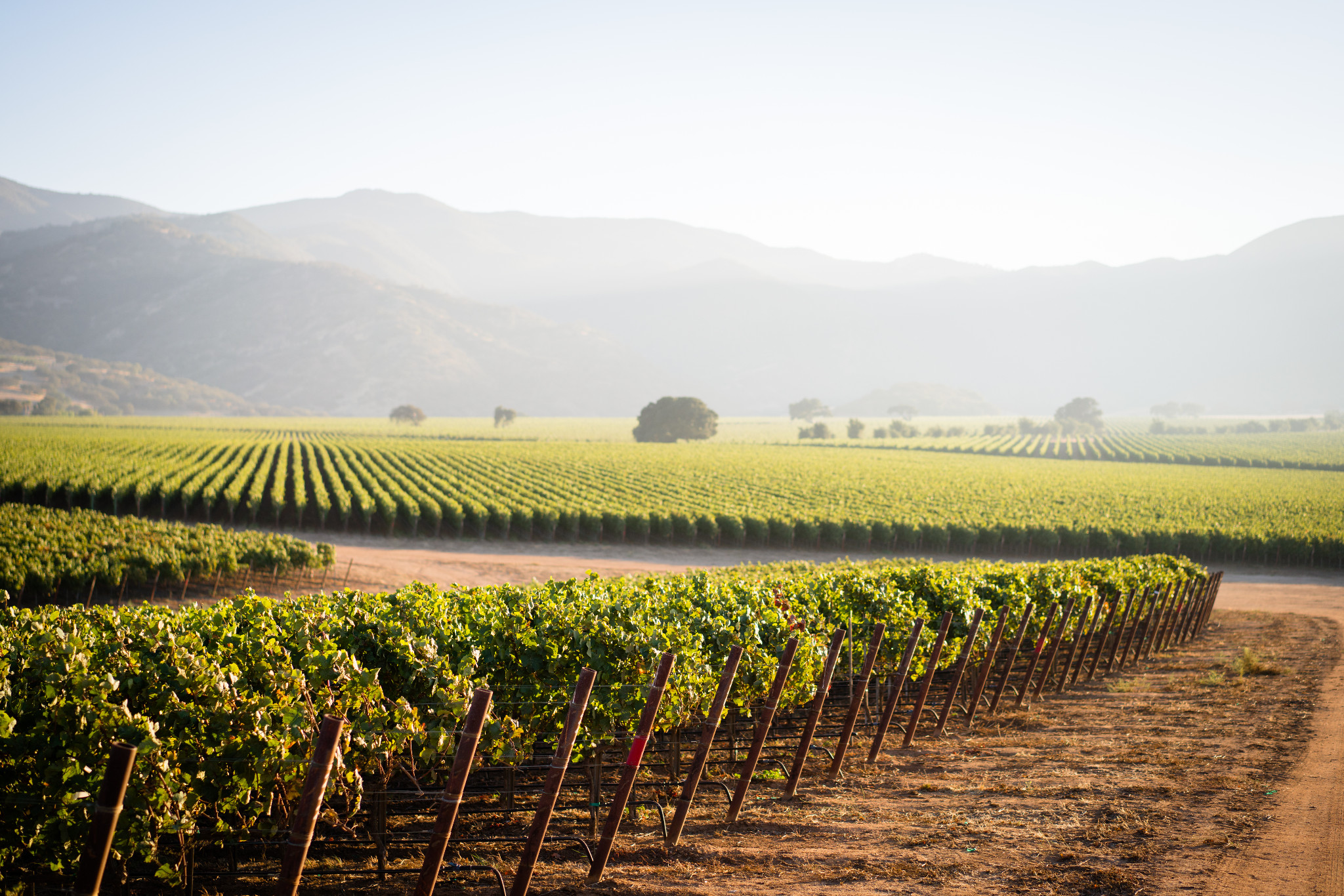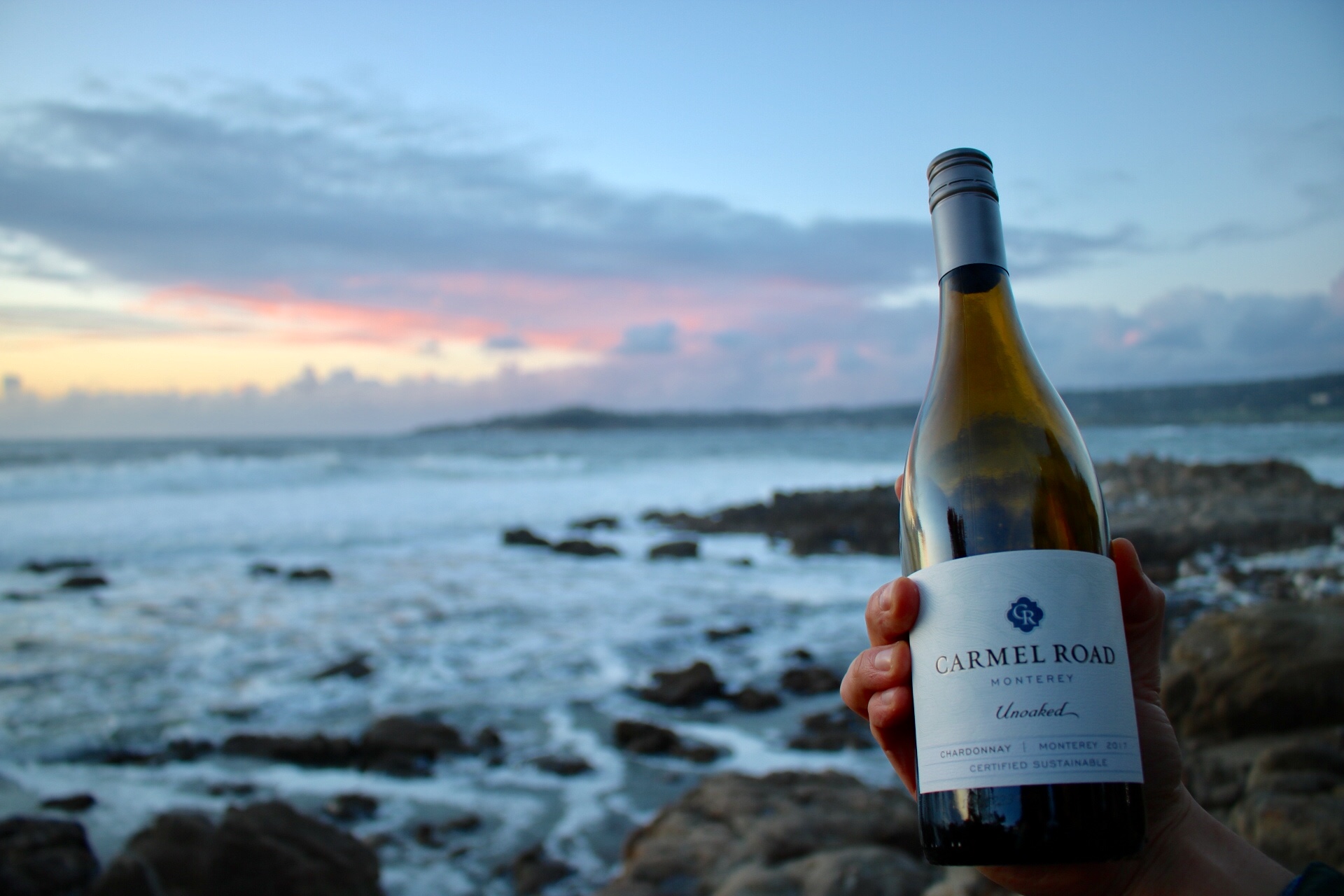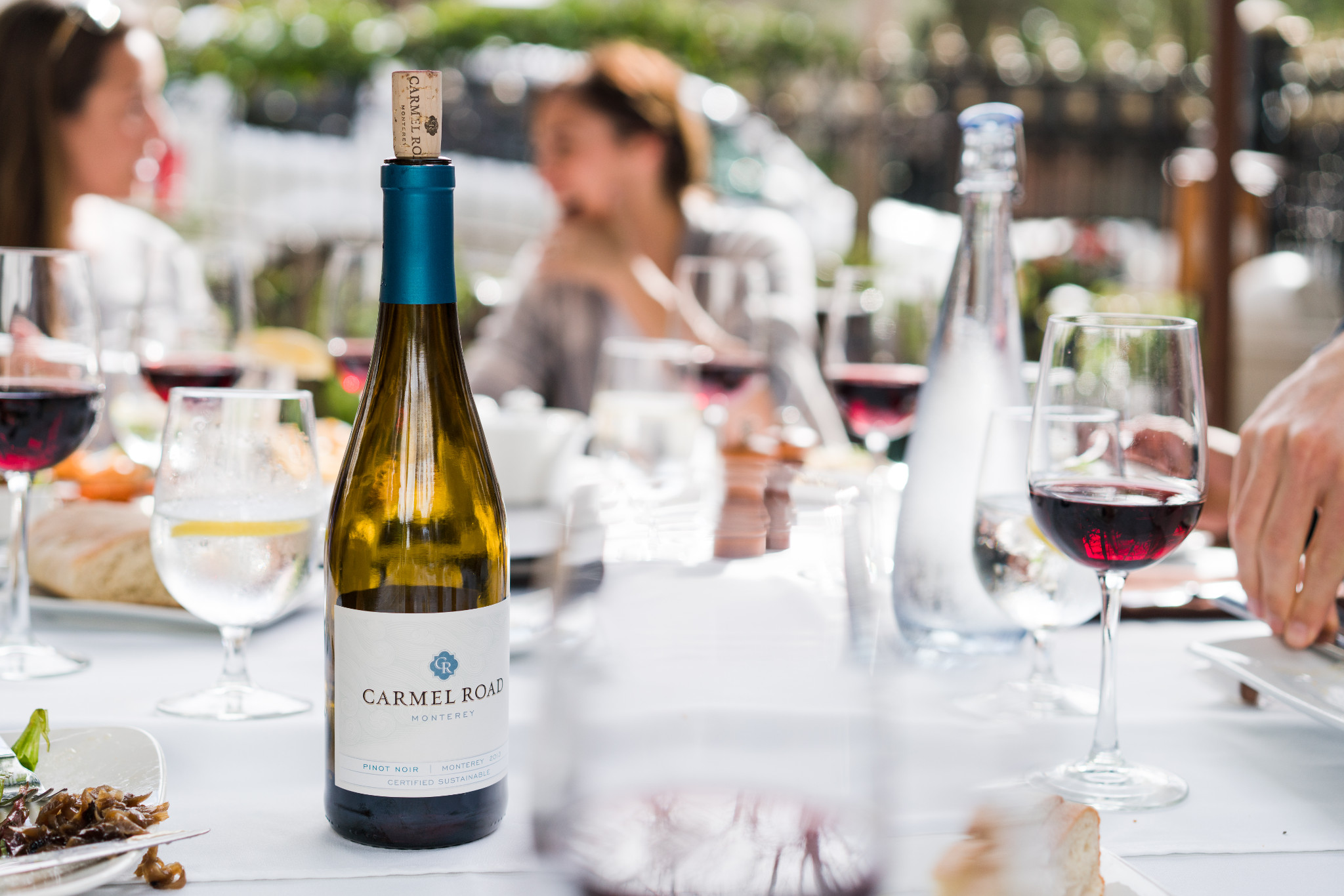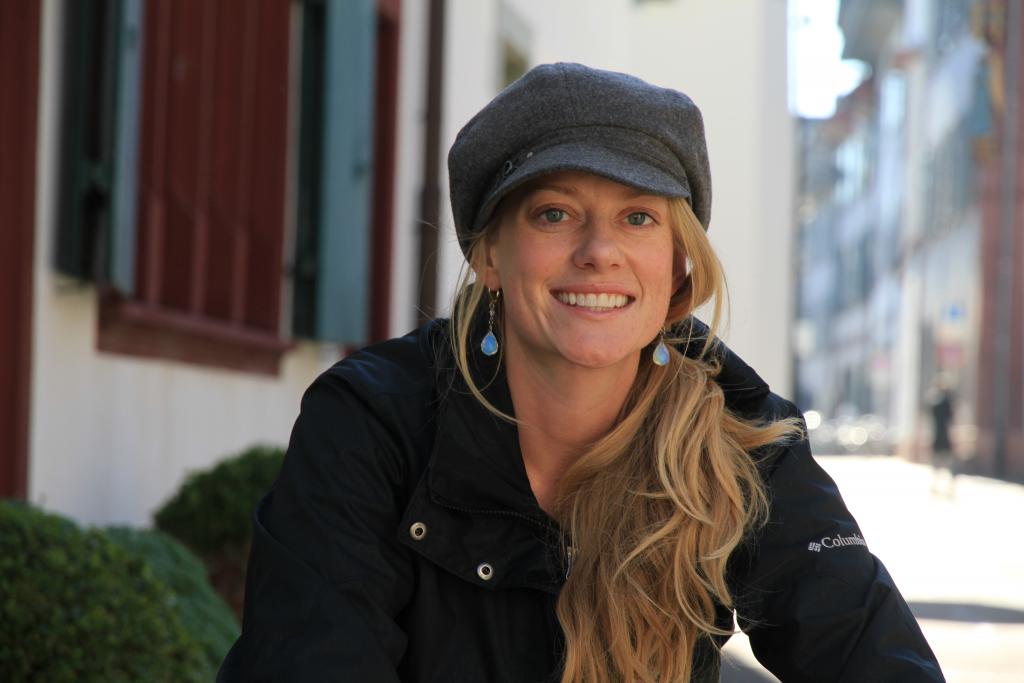Behind the Bottle

My favorite part of wine is the story of its journey from grape to glass, and all the many people who craft it into the final product. Each step of the way requires careful attention and care, and the winemaker is responsible for overseeing the entire process. It was a dream to be able to interview winemaker Kris Kato, to learn more about his work and his own journey to Carmel Road winery.
When I first greeted Kris at the winery in Monterey, he was unassuming in a company fleece and jeans and surprised me with the most unexpected, and welcome invitation: tacos. The winery staff had all just finished a team volunteering event at the local food bank, and they were about to dig into lunch together. Did I want to join?
You don’t have to ask me twice, so we got to know each other with the rest of the company over horchata and carne asada. Afterwards Kris took us on a tour of the winery, bottling area and barrel room. Finally, we sat down for a private tasting and interview. Kris’ passion for his craft was palpable, and I began wondering just how does one become a winemaker?
Your journey to winemaking started with brewing beer. How did this journey evolve?
I grew up in Portland, Oregon, with a family heritage in agriculture. While at Oregon State University, I started brewing beer with my college buddies. I loved fermentation science so much, that I majored in it. I eventually moved from brewing beer to crafting wines, where I’m able to work with both agriculture and science. I’ve been making wine for 20 years now, the last 5 for Carmel Road.
How does brewing beer and making wine compare? Are there techniques that can be learned between processes?
The similarities between brewing beer and making wine are applied science: the creation of something. Yes, there is a recipe, but there is a lot of interpretation, and a lot of art. To me, it’s the creation of something that is a really good blend of art and science, that’s why I love the process.
The differences are that wine is an agricultural product that’s very seasonally driven. Harvest is once per year and your starting materials can be different depending on mother nature. That’s why you have to have a big tool belt to be able to pull from different experiences. I think that the stress is the fun, you just never know how the vintage is going to look. I love the added challenge of working with the variables in the vineyard. It’s a lot of pressure but, you know, it’s very gratifying.
What is your inspiration when making wine?
My mantra is to make a wine that pairs well with a variety of cuisines. Balance and pairing well with food are my two most conscious intentions when I make wine. I like to cook a lot, so I want a wine that can pair with dishes with Asian influence, Californian influence like Tex-mex, and coastal cuisine.
I also think: “What do I want to drink?”, and that’s the kind of wine I want to make. I think about my wife and I, when we come home from a long day of work and want to enjoy a glass of wine together, we don’t want to put a lot of thought into it, we just want it to be good.
When winemaking here, I take every blend to my wife for her opinion. I don’t tell her anything about it, because I know I’ll get completely unfiltered feedback. It’s not wine speak, it’s just how most people are. Sometimes we overcomplicate it, but at the end of the day, drink what you like. I hope to make wines people want to drink, that can be enjoyed with any meal.
Monterey is a beautiful place for growing grapes. How does the location of its coastal vineyards affect the wines?
The coastal influence gives a long growing season, which provides a balance of full flavor development with preservation of acidity. You’ll never see Pinots in my area that lack color. Pinots here can be very masculine and structured, so I am always making a conscious effort to make more rich and softer edges.
Monterey is such a great place to do unoaked chardonnay because the longer growing season creates tropical notes that can shine without barrel influence. I pick the grapes a little earlier, which means a little less sugar and lower alcohol. The fruit spectrum ranges from tart lemon to green apple, and when it’s really ripe it goes from stone fruits like peach and apricot, to baked apple pie. With our unoaked chardonnay, I wanted to be on that front end of the spectrum to let the tropical notes shine with flavors of pineapple, mangoes, and guavas.
Monterey is truly an incredible wine growing region. I want to be one of the vehicles to help elevate the quality and prestige of the region because I think it can stand up against some wines that are the best made in the states. I think the value to quality is amazing; these wines are every bit as good as wines charging one, two, three, or even four times their price tag. That’s where as a consumer I get excited.
Carmel Road is Certified Sustainable by CCSW (Certified California Sustainable Winegrowing) and SIP (Sustainability in practice). What does this look like in the winemaking process?
Our resource management shows up throughout our winemaking process, from renewable energy to sustainable agriculture. Here in California, water security is critical, and we are proud to be 2x as water efficient as the industry average by using a closed loop water recycling system.
In the vineyard we employ practices and technologies that allow us to substantially reduce the amount of water our grapes need to produce the best flavors, including drip irrigation and moisture monitoring for vine stress levels.
In the winery this includes rainwater capture, barrel wash water recycling, and onsite water treatment for reuse in vineyard irrigation. Our innovative barrel wash water system recaptures, filters, and reintegration heated wash and rinse water, recycling the water three times before it is eventually drained to our treatment ponds to be reused for vineyard irrigation. This innovative technique saves uses 45% less hot water and 40% less water overall.
Do you have a favorite part of the winemaking process?
It’s all my favorite part. But, if I’d have to choose, it’d probably be blending day in late summer because it’s the accumulation of our work all year. Blending day is when we toil away at all our small lot barrel aged wines and choose our 10 favorite barrels for blending into the vintage. This represents the pinnacle of the best of the best.
How has your expertise in winemaking changed how you drink and enjoy wine?
As a winemaker, it’s hard for me to be not critical. I used to be uber critical because I was always looking at it through the winemaker lens. Now it’s more about enjoyment and appreciation about the things that are different. There are lots of different styles of wines. That maturity, for me, developed over time. Now I can go out to a restaurant and order a wine, and it while it may not be my favorite, I can try and look and see what the winemaker was trying to do rather than critique it.
I’m loving the Unoaked Chardonnay; can you describe more about the winemaking process and why you choose to forgo the oak barrel?
People may call a wine like this “simple” because it is clean, refreshing and approachable, but still has layers of complexity. It has weight, texture, vibrancy, but without oak. This is the “fish tacos all day long wine”. It pairs great with a spicy Asian dish or Thai food.
Lees stirring in tanks instead of barrel aging gives the same effect of creaminess without the oak. We wanted to drive a different style and create a uniqueness while still doing right by the wine, and most importantly, to make a wine that I as a winemaker want to make.
It’s clear you have an incredible palate to decipher the minute flavor influences. What are your tips for beginning wine tasting to expand their palate abilities?
Some classes I took that were really helpful were from a perfumist. He was able to point out the smells and tastes properly. It’s funny, even me, as someone in the industry, I would refer to something as mint, he would say, “But go deeper. Is it spearmint? Is it peppermint? Is it eucalyptus?”
For me, a lot of wine tasting is memory association - it’s things that you probably associate with foods that you’ve had in your childhood. That’s the biggest hurdle, how do you and I, when we don’t know each other, talk about a wine in a language that we both understand? It’s very difficult. My descriptors mean something to me, but then it is a challenge to articulate. I always look at it in 3 categories:
- Aroma: What does it smell like?
- Flavor: What does it taste like?
- Textural component: What does it feel like in your mouth?
It’s not about right or wrong, it’s about how you choose to describe it. Wine is really about memory attachment, when you go out for a good meal and you have a great wine, very often you don’t just remember the wine, you remember where you were at, who you were with, why you were there.

